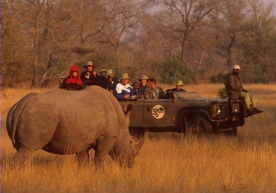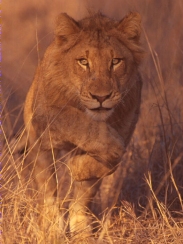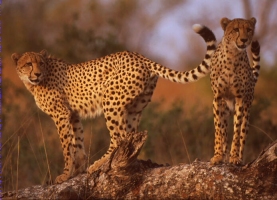Sabi Sabi
Private Game Reserve

| Wildlife Photography at Sabi Sabi Private Game Reserve |
 |
|
Lights ... !
Good light is essential for good photography. The first two hours of sunlight following dawn, and the last two hours before sunset offer soft golden light that will make your pictures positively glow. Fortunately the game drive times at Sabi Sabi coincide with the good light periods. On an overcast day the reverse applies. Best times a little later in the morning and mid afternoon. Fortunately, in cool overcast conditions animal activity usually continues right through the day. A powerful flash is also essential to make the most of the prolific night photography opportunities. The afternoon game drives continue into an hour or two of darkness. Lion, leopard and hyena are very likely to be seen at night, along with the smaller nocturnal creatures such as civet, genet and white-tailed mongoose. |

|
|
Camera ... !!
When using telephoto lenses, a firm camera support is essential to take sharp pictures. A bean bag is a handy way to steady the camera. It is also possible to set up a tripod in the Sabi Sabi open Land Rovers, but this tends to be a bit awkward if you need to switch sides of the vehicle quickly. If you are serious about your photography, I would recommend taking a Manfrotto 035 Clamp. Attached to the sturdy handrail on the vehicle, it provides a rock steady platform. I generally use a Manfrotto 136 Video Head with the clamp to allow for smooth panning. No matter whether shooting prints or slides, 100ASA film is a good all round choice. It is worth carrying a couple of rolls of fast 400ASA film as well, to get extra reach for flash photography at night. Since you will get very close to the animals at Sabi Sabi, super telephoto lenses are unnecessary. A good combination would be a 70 - 200mm zoom, and a fixed telephoto of either 300mm or 400mm. A wide angle can also be useful to show animals in a scenic setting. |

|
|
Action ... !!!
When you spot a good subject, don't just snap a few pictures and stop trying. As long as your vehicle remains on the sighting - hang in there! Sooner or later something interesting will happen - possibly even new and previously unrecorded behaviour. Remember there is always a better picture waiting to be taken! Action photography opportunities - such as a cheetah catching its prey - can be fast and fleeting. Be ready at all times by leaving your camera on continuous auto-focus mode. I also select for the highest possible shutter speed by using aperture priority set ‘wide open’ (the widest possible aperture for the lens). At twilight striking effects can be obtained using a combination of a long exposure whilst panning with a moving animal, coupled with flash. Experiment by setting your camera at minus one stop exposure, and dialling in one stop underexposure on the flash as well. The resulting image gives a strong impression of movement coupled with a moment in time frozen by the flash - this technique has long been a favourite among National Geographic photographers! |

|